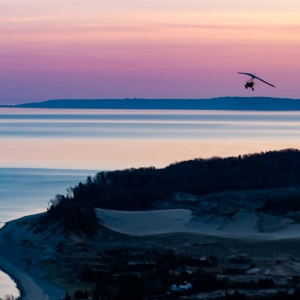The Stream, June 9, 2021: Expert Warns Against Dam Development in Murray-Darling Basin
YOUR GLOBAL RUNDOWN
- More dams are not the answer to water woes in Australia’s Murray-Darling Basin, one expert warns.
- Right-wing militia supporters in Oregon threaten to open the headgates of a canal in Klamath Falls to restore the flow of water for irrigators.
- New technology that monitors sewer systems could change stormwater infrastructure management in cities across the United States.
- Preliminary data shows high levels of PFAS chemicals are showing up in rain and snowfall in the Great Lakes region.
Environmentalists and locals fear a mining project near the Okefenokee National Wildlife Refuge in Georgia could cause irreversible damage to the swamp.
“I’ve paddled the swamp all my life. They cannot 100 percent guarantee they would not destroy or harm the swamp. And I don’t want them here.” – Sheila Carter, who lives near the Okefenokee swamp and whose ancestors first came to the area in 1858. Twin Pines Minerals, a mining company out of Birmingham, Alabama, is seeking government permits to mine on land less than three miles from the Okefenokee National Wildlife Refuge. The Associated Press reports that environmental activists and locals like Carter fear that if the permits are granted, the mine could cause irreparable harm to the swamp. The fate of the mine now lies with the Georgia Environmental Division after former President Donald Trump changed the rules of the Clean Water Act, ending federal protection for millions of miles of streams, arroyos, and wetlands.
- Why it matters: Throughout his presidency, Donald Trump prioritized big business and reduced pollution protection for waterways. In his final months in office, the Trump administration pushed through a flurry of environmental deregulatory actions. This included trimming the scope of the Clean Water Act and changing nationwide permits for dredging and filling waterways.
IN RECENT WATER NEWS
Marine Blooms of Harmful Algae Increasing in Europe, Much of the Americas
Microscopic phytoplankton, which are the foundation of the marine food chain, are some of the world’s most abundant and ancient organisms. Though essential, they produce plenty of drawbacks, too. When they cluster along the coast, certain species paint the nearshore waters in a palette of fiery reds and mossy greens. Other toxin-producing species cause beach closures, kill fish, and lead to restrictions on harvesting clams and oysters. A particularly devastating bloom on the Chilean coast in 2016 killed an estimated 27 million farmed salmon and trout.
Anecdotal evidence suggests that these marine harmful algal blooms are on the rise. But are they really increasing globally?
According to a first-ever assessment, the answer is no.
In Case You Missed It:
HotSpots H2O: The Toto, One of the World’s Smallest Ethnic Groups, Face Water Shortages Along the India-Bhutan Border – Quarries in Bhutan’s Tading hills have caused water shortages for the village of Totopara in the Himalayan foothills of West Bengal.
What’s Up With Water – June 7, 2021 – This week’s episode covers a study that found lakes around the world are being starved of oxygen, Chinese officials who warn of major flooding this summer, and documents that show the risks aging dams across the United States pose to toxic waste sites.
Right-wing Militia Supporters Threaten To Open Headgates of Klamath River Canal Amid Drought
Right-wing militia supporters are threatening to force open the headgates of a canal at Oregon’s Klamath Falls, the Guardian reports. Tensions began rising last month after the federal Bureau of Reclamation announced irrigators in the Klamath Basin wouldn’t receive any water from the main canal. Later in the month, two Oregon irrigators – along with members of the far right People’s Rights Network – purchased and occupied a piece of the land adjacent to the canal headgates, promising to restore the flow of water. The conflict comes amid a historic drought in the American West.
TODAY’S TOP WATER STORIES, TOLD IN NUMBERS
39 PERCENT
One environmental scientist is warning against building new dams in Australia’s Murray-Darling Basin, arguing that more dams might not be useful since average river flows have dropped by 39 percent over the last 20 years. The Sydney Morning Herald reports that Mark Howden, director of the Institute for Climate, Energy, and Disaster Solutions at the Australian National University and vice-chair of the United Nations Intergovernmental Panel on Climate Change, said that climate change is worsening river flows and there may not be enough water to fill new reservoirs. The warning comes as federal officials are pushing for more funding for dam projects, some of which could cost as much as $2.1 billion.
$8.5 BILLION
Stormwater systems are expensive to build and maintain and are neglected in budget decisions. The Water Environment Federation reported an $8.5 billion annual shortfall in funding for stormwater infrastructure. But a system of low-cost sensors that monitors sewer systems could change stormwater management in cities across the country, the Washington Post reports.
ON THE RADAR
Rainwater collected in Cleveland, Ohio, in April contained a high amount of toxic PFAS chemicals, MLive reports. Preliminary data from the Integrated Atmospheric Deposition Network, a Great Lakes monitoring program, suggests PFAS chemicals are a major contaminant in regional rain and snow.
Jane is a Communications Associate for Circle of Blue. She writes The Stream and has covered domestic and international water issues for Circle of Blue. She is a recent graduate of Grand Valley State University, where she studied Multimedia Journalism and Women, Gender and Sexuality Studies. During her time at Grand Valley, she was the host of the Community Service Learning Center podcast Be the Change. Currently based in Grand Rapids, Michigan, Jane enjoys listening to music, reading and spending time outdoors.






Leave a Reply
Want to join the discussion?Feel free to contribute!